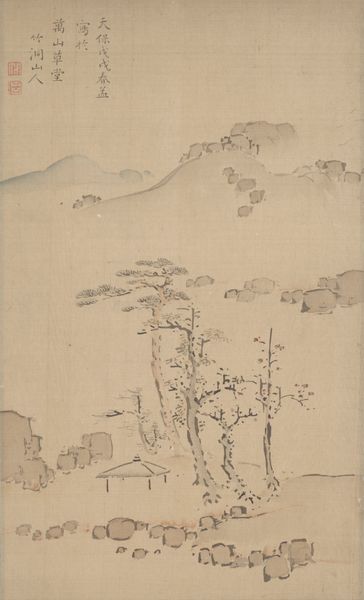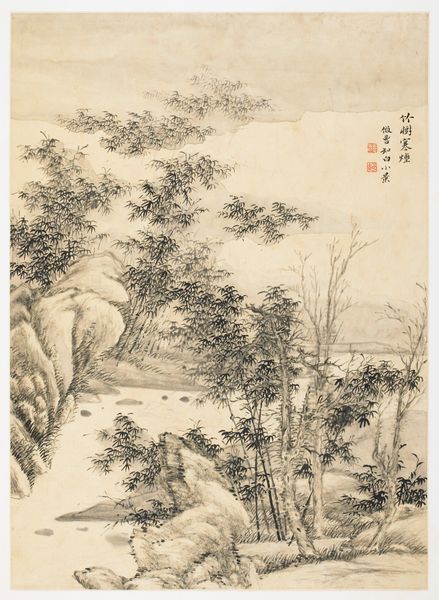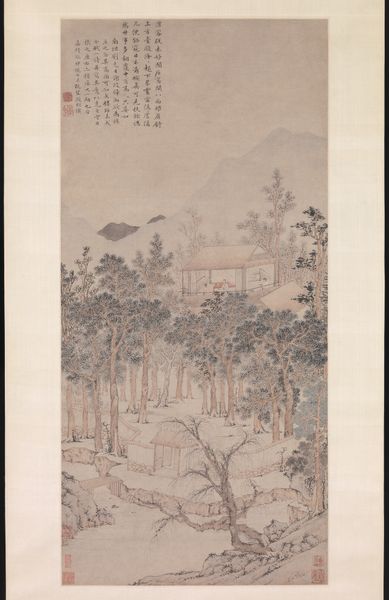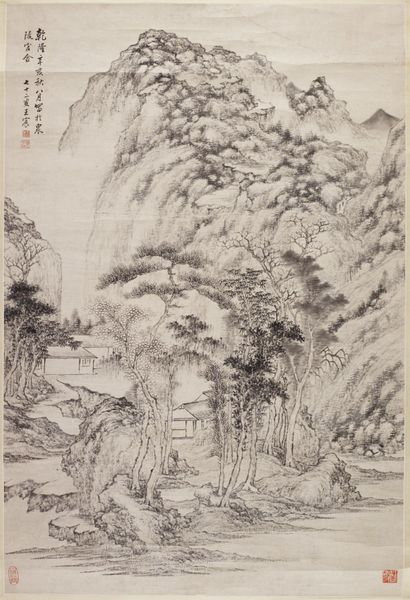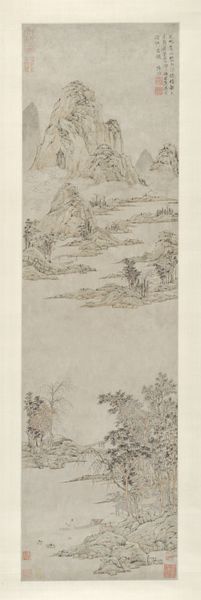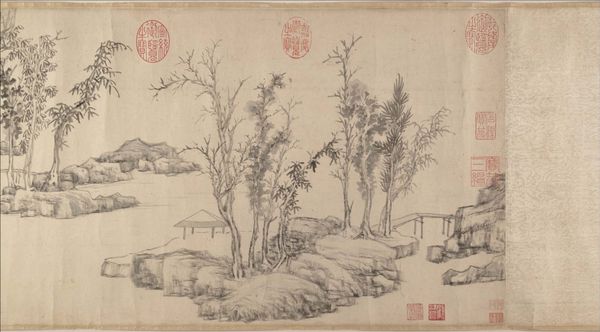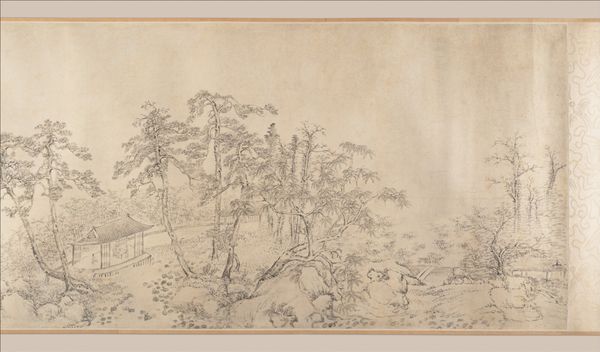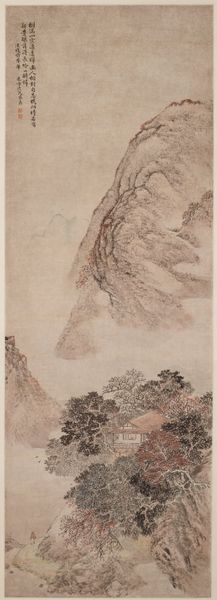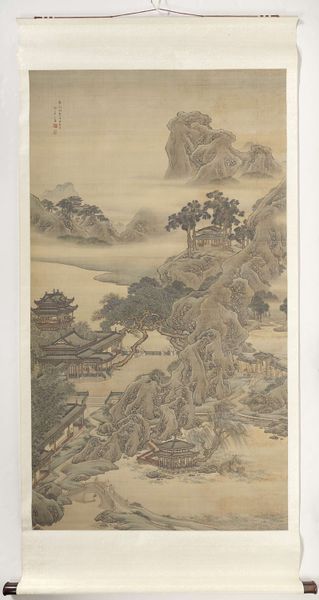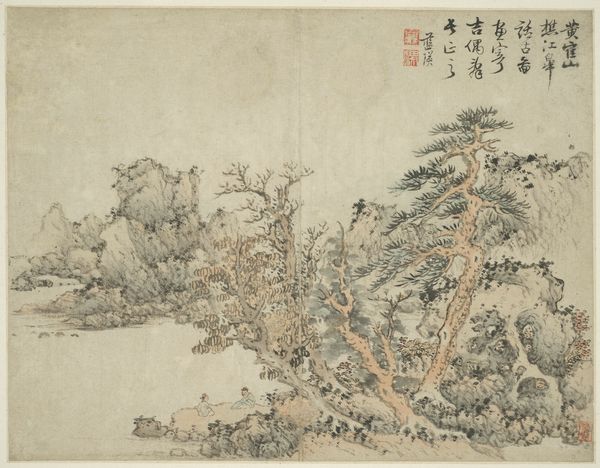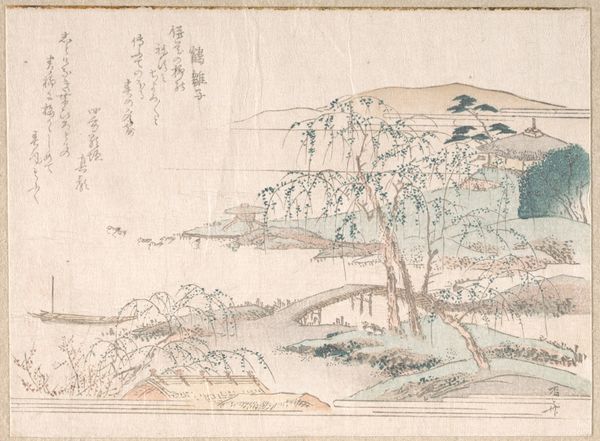
painting, paper, hanging-scroll, ink
#
painting
#
asian-art
#
landscape
#
paper
#
hanging-scroll
#
ink
Copyright: Public Domain
Editor: Before us is "Landscape at Han River Bamboo Hall," crafted in 1668 by Zhu Chang. It's an ink painting on paper, presented as a hanging scroll, currently residing at the Minneapolis Institute of Art. The monochromatic ink creates a somewhat austere yet tranquil atmosphere. How might a formalist approach illuminate this piece for us? Curator: Considering only what we see on the scroll itself, the composition is remarkably vertical, directing the viewer's eye upward. Note the strategic placement of the trees in the foreground – they function almost as framing devices, leading us towards the distant, towering mountain. The brushstrokes themselves convey a sense of texture, particularly in the rendering of the rocks and pine needles. How do you perceive the relationship between line and wash in creating depth? Editor: The washes definitely soften the mountain outlines and create a sense of atmospheric perspective. Is the contrast in brushstrokes--from delicate lines to broader washes--intentional in guiding the viewer’s focus? Curator: Precisely. The starker lines in the foreground invite scrutiny, while the blurred washes of the mountains encourage a receding perspective. Notice how the artist manipulates the tonal range of the ink, moving from deep blacks to diluted grays to generate form and spatial relationships. This control over materiality is vital to understanding the success of this landscape. What is your feeling of the interplay of dark and light as a formal element in the composition? Editor: It seems the strategic contrast of light and dark helps to build a layered, almost theatrical space, heightening the sense of depth and scale. The composition draws me into the depicted world. I am more confident at visually analysing ink wash scroll paintings now. Curator: And in focusing purely on the formal elements, we've identified the artist's sophisticated manipulation of ink and composition, thereby creating depth, directing our gaze, and, importantly, activating space. A testament to the expressive possibilities inherent in formal restraint.
Comments
minneapolisinstituteofart almost 2 years ago
⋮
Born in Anhui province, Zhu Chang lived mostly in neighboring Xin'an. While there, he studied with Hongren (1616-1663), the central figure of the Anhui or Xin'an school of painting. It was from that renowned master that Zhu learned the basics of his own technique and style. This scroll features the rectilinear and multi-faceted cliffs and elongated spreading pines characteristic of the famous Huangshan mountains of Anhui province. The linear, rather spare style capturing the fissured forms and surfaces of the rocks and trees, owes a great deal to Hongren as well as to the solitary nature of Zhu's own personality. Zhu is also said to have studied and copied works by various Yuan dynasty masters: their influence is observed in the extreme degree of simplification in his sparse landscape paintings. The inscription reads: During the first lunar month of the year 1668, painted at leisure in the Bamboo Hill Inn on the River Gau by Zhu Chang, called Shanshi.
Join the conversation
Join millions of artists and users on Artera today and experience the ultimate creative platform.
